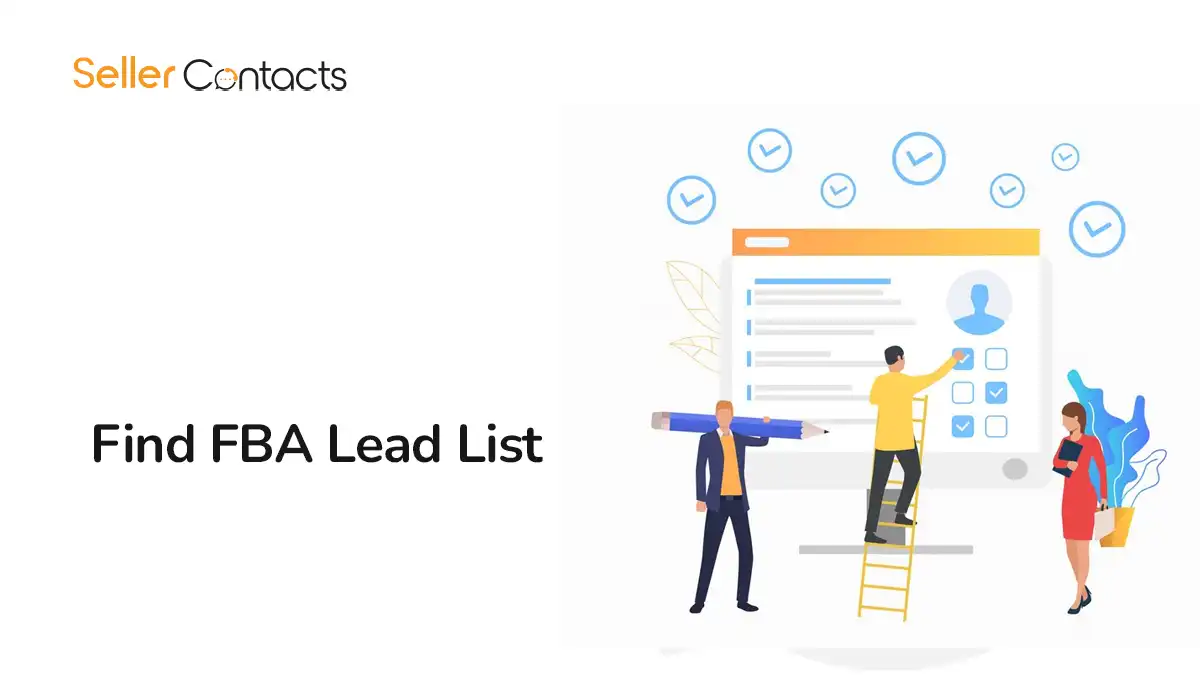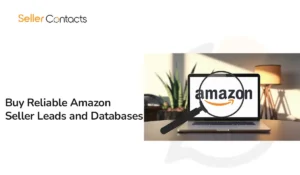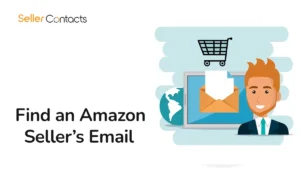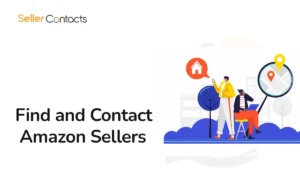The success of businesses offering Amazon-related services often depends on connecting with the right clients—FBA seller leads. These are individuals or businesses using Amazon’s Fulfillment by Amazon (FBA) program to handle their product storage, shipping, and customer service. Identifying and reaching out to these sellers can open doors to partnerships, service contracts, and mutually beneficial relationships.
Where can you find FBA seller leads? They can be sourced from Amazon’s marketplace itself, social media platforms, online directories, or by utilizing specialized lead generation tools. This article breaks down effective methods to locate these leads and how to convert them into valuable clients.
Who Are FBA Sellers, and Why You Should Target Them?
FBA sellers are Amazon merchants who leverage the FBA program to outsource key aspects of their operations. By doing so, they save time and focus on scaling their business. These sellers often require additional services such as product research, marketing, inventory management, and logistical support, creating a significant demand for specialized solutions.
Why Target FBA Sellers?
- Large Market Opportunity: With over 2 million active sellers globally, Amazon FBA sellers represent a growing segment of the eCommerce industry.
- High Demand for Services: Many FBA sellers lack the expertise or resources to manage all aspects of their business, opening opportunities for service providers.
- Diverse Needs: FBA sellers require help with everything from advertising campaigns to streamlining supply chain operations, making them an ideal audience for a variety of B2B solutions.
By targeting FBA sellers, businesses can establish long-term relationships with clients who are already positioned in one of the world’s largest marketplaces.
How to Find FBA Seller Lead List
Using Amazon’s Marketplace
One of the most direct ways to find FBA sellers is by exploring the Amazon marketplace itself. Many product listings include the label “Fulfilled by Amazon,” which indicates that the seller uses the FBA program. By browsing through categories relevant to your niche, you can compile a list of sellers to contact.
Tools to Enhance Research:
- SellerContacts: Provides detailed Amazon FBA seller database with a wide variety of data points and location-based filtering capability. Great for both small and large businesses targeting FBA sellers for partnership opportunities.
- Jungle Scout: This tool offers detailed insights into seller profiles, sales volumes, and product rankings, making it easier to identify promising leads.
- Helium 10: Provides analytics on sellers, their products, and the competition within specific niches.
By analyzing product performance and seller activity, you can pinpoint businesses that may benefit from your services.
Leveraging Social Media Platforms
Social media is a treasure trove for identifying and connecting with FBA sellers. Platforms like Facebook, LinkedIn, Instagram, and TikTok are popular among eCommerce entrepreneurs.
- Facebook Groups: Communities such as “Amazon FBA Sellers” or “FBA Masterminds” often have thousands of active members. Participating in discussions or offering helpful advice can position your brand as a valuable resource while building a list of potential leads.
- LinkedIn: Use LinkedIn’s advanced search filters to identify FBA sellers based on industry, location, or company size. This professional network is particularly effective for targeting larger sellers or service providers.
- Instagram & TikTok: Many smaller brands and individual sellers showcase their journey on visual platforms, providing insights into their operations and contact details.
Online Directories and Forums
Directories and forums provide another layer of insight into the FBA seller ecosystem.
- eCommerce Directories: Platforms like Alibaba and ThomasNet list suppliers and businesses, many of which operate as Amazon FBA sellers. Cross-referencing their listings with Amazon can help you find active sellers.
- Seller Forums: Communities like Amazon Seller Forums or subreddits such as r/FulfillmentByAmazon offer opportunities to engage directly with FBA sellers. Participating in these discussions can help you identify potential leads and understand their pain points.
Data Tools and Lead Generation Platforms
For businesses looking to scale their outreach efforts, lead generation platforms and data tools can provide quick and actionable insights.
- Apollo.io and ZoomInfo: These platforms offer verified contact details and advanced filtering options to target Amazon sellers specifically.
- Data Scraping Tools: Software like Scrapy allows you to collect publicly available seller data from Amazon, including store names and contact information.
Using these tools ensures you get accurate and relevant leads while saving significant time on manual research.
Hiring Freelancers for Lead Research
If you lack the time or resources for lead generation, freelancers on platforms like Upwork and Fiverr can be an excellent alternative. These professionals specialize in compiling FBA seller leads, often including key details such as email addresses, product categories, and sales performance.
Freelancers typically use tools like SalesQL, Apollo, and Lusha to verify contact information, ensuring the leads are actionable and up-to-date.
Best Practices for Reaching Out to FBA Sellers
Once you’ve identified your leads, the next step is crafting a compelling outreach strategy. A well-thought-out approach can significantly improve your response rates and establish trust with potential clients.
Personalize Your Outreach
Generic messages are a surefire way to get ignored. Instead, tailor your communication to the specific needs of the seller. Mention their products, niche, or potential challenges they might face. For example:
“Hi [Seller Name], I noticed your [product] is performing well on Amazon, and I specialize in helping FBA sellers optimize their listings for higher conversions. I’d love to discuss how we can help you increase sales by 20%.”
Provide Value First
FBA sellers are bombarded with offers, so standing out requires demonstrating value upfront. Offer a free consultation, share insights about their listings, or provide actionable tips they can implement immediately.
Leverage Multiple Channels
Reach out to sellers through a combination of email, LinkedIn, and even direct messages on social media platforms. Diversifying your communication channels increases your chances of getting noticed.
Follow Up Strategically
Persistence pays off, but it’s important to strike the right balance. Space your follow-ups over several days or weeks and use each touchpoint to offer additional value. For instance:
- First Follow-Up: Share a relevant case study or success story.
- Second Follow-Up: Offer a free resource, such as a guide or tool, related to their needs.
Key Takeaways
Finding and connecting with FBA seller leads requires a combination of research, tools, and strategic outreach. Whether you’re browsing the Amazon marketplace, leveraging social media, or using advanced lead generation platforms, the key is to offer value and build trust.
By following the methods and best practices outlined in this guide, you can position your business as a go-to solution for FBA sellers, driving growth and building lasting partnerships.





